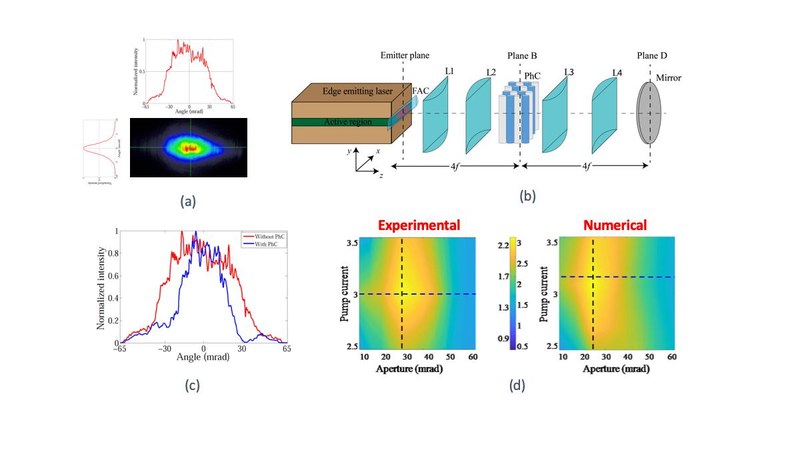Sandeep Babu Gawali defends his thesis on intracavitat spatial filtering in semiconductor lasers
Dec 24, 2020
Sandeep Babu Gawali defended his thesis co-directed by Kestutis Staliunas and Jose Trull on December 17 at the Terrassa Campus. Titled "Intracavity spatial filtering in broad area semiconductor lasers", the thesis presents a study on the improvement of the spatial quality of laser beams emitted by high-power semiconductor lasers using photonic crystal filters implemented inside the laser cavity
Semiconductor lasers in high-power regime typically manifest a poor beam quality due to its asymmetric beam divergence and its large beam quality factor (M2). The emission along one of the transverse directions (slow axis) is typically multimode while being single mode in the perpendicular direction (fast axis). Due to the multimode emission and the absence of any intrinsic mode selection mechanism, the beam quality of broad area semiconductor (BAS) laser is degraded. In this work, we demonstrate that, by means of spatial filtering technique, the beam quality may be improved along the lateral direction (slow axis). For the filtering purpose, we propose the use of photonic crystal (PhC) as the spatial filtering element. The PhC offers an advantage in terms of its compact size, which allows miniaturization of the device. The successful implementation of this scheme could lead to monolithic integration, with the PhC directly integrated between the front facet of the semiconductor material and the laser cavity mirror. The PhCs were fabricated on N-BK7 glass substrate using tightly focused femtosecond Bessel beam. Two different PhC with different parameters were used in the experiment. The filtering of the PhC appears due to the deflection of selected components of the beam out of the propagation direction, using the Laue configuration. Since the PhC operates only in the near field plane, the access to this plane for the experimental testing of the idea introduces a technological difficulty in such small devices. We followed a simplified approach using an extended cavity configuration, which mimics the action of the compact cavity. The advantage of the extended cavity setup is that it allows testingdifferent filtering geometries in the same setup. The extended cavity was built using AR coated single emitter BAS laser, fast axis collimator, a double 4f lens system, and an external mirror with reflectivity of 4%. This extended cavity allows implementing two different techniques, i.e. an intracavity slit and a photonic crystal in the same setup. The cavity was characterized by measuring the output power, beam quality factor (M2), spectrum, and near/far field laser profiles. Before testing the action of PhC, we tested the conventional spatial filtering using intracavity slit placed in the far field and acting on the beam in the lateral direction by blocking the higher angular components of the beam. The output beam from the external cavity was characterized by measuring the M2 along the slow axis and calculating the brightness of the beam. We demonstrate an enhancement in the brightness by factor of two compared to the unfiltered beam situation. We further evaluated the effect of the reflectivity of the feedback mirror on the output power and spatial profile of the beam. The filtering action of the PhCs was characterized using the same extended cavity configuration. In this configuration an enhancement of the brightness by a factor between 1.3 and 1.5 was demonstrated for the different crystals. The experimental results obtained using intracavity slit and PhC were compared with the numerical results obtained froma numerical model of broad area laser created to simulate the action of spatial filtering using either the intracavity slit or the PhC. Both results showed a good agreement between the experiments and the numerical results.The numerical code was used to further optimize the brightness enhancement by simulating different filtering geometries.

Share: